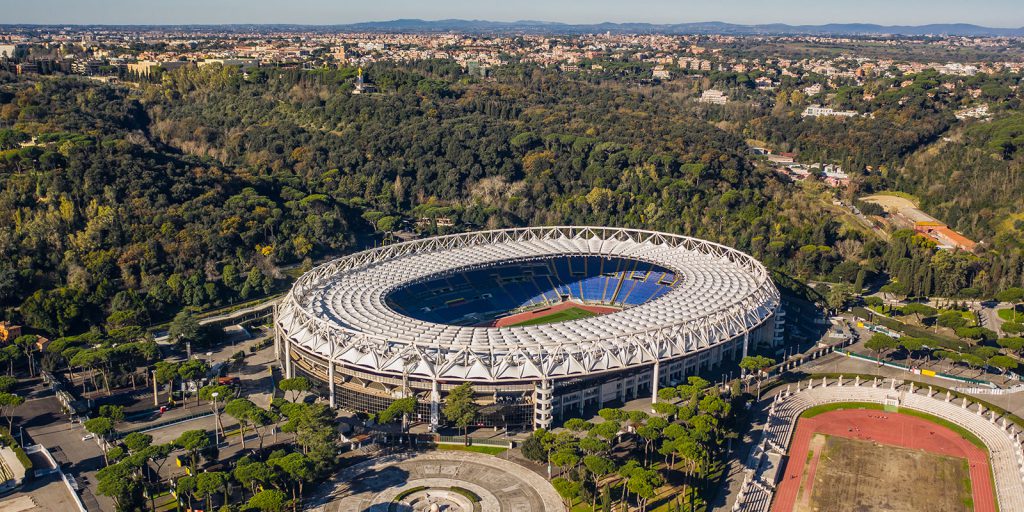The great stories behind the Stadiums where Europe played the 2020 European Cup

Share this post
1. Wembley Stadium (England)
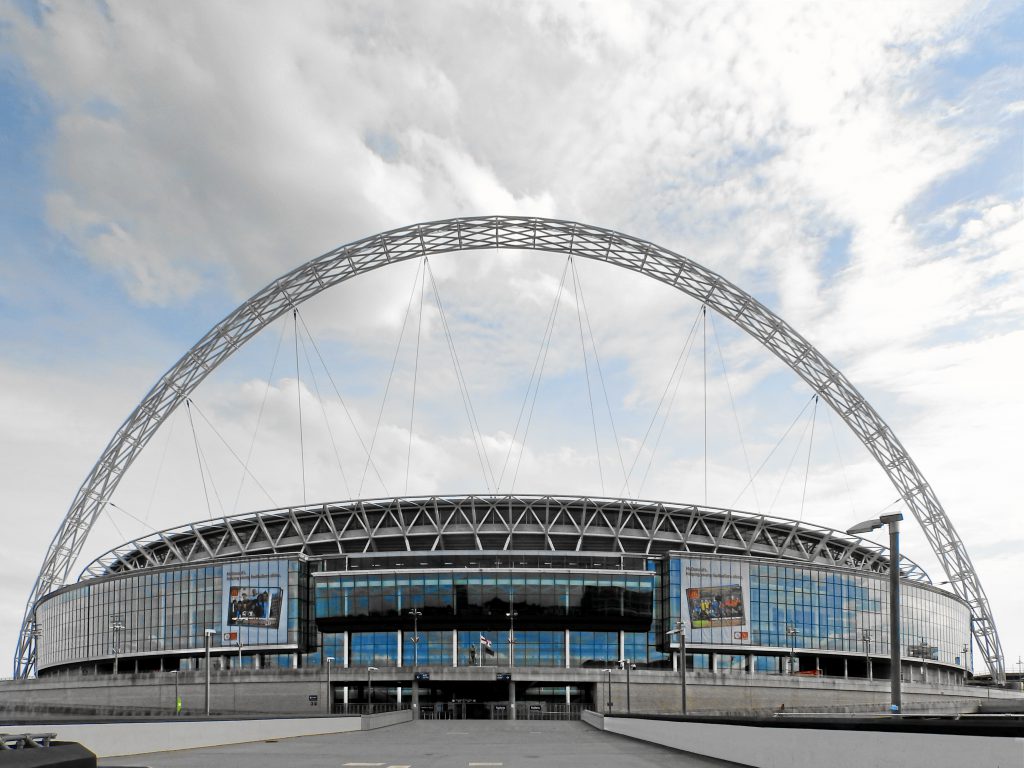
The Wembley Stadium hosted the finale of Euro 2020. It is one of the most famous Stadiums in Europe. You probably know it from famous events (concerts, cups, etc…)
But did you know that the stadium that we know is actually the new one? Indeed, the old Wembley Stadium that was inaugurated in 1923 was demolished in 2000. The construction work on the new stadium began in 2002 and was completed in 2007 with an opening to the public on 9 March 2007.
It was designed by the architects Foster + Partners and HOK Sport (now Populous) and the engineers Mott Stadium Consortium (Mott MacDonald, Sinclair Knight Merz and Aurecon). The design of the building services was carried out by Mott MacDonald.
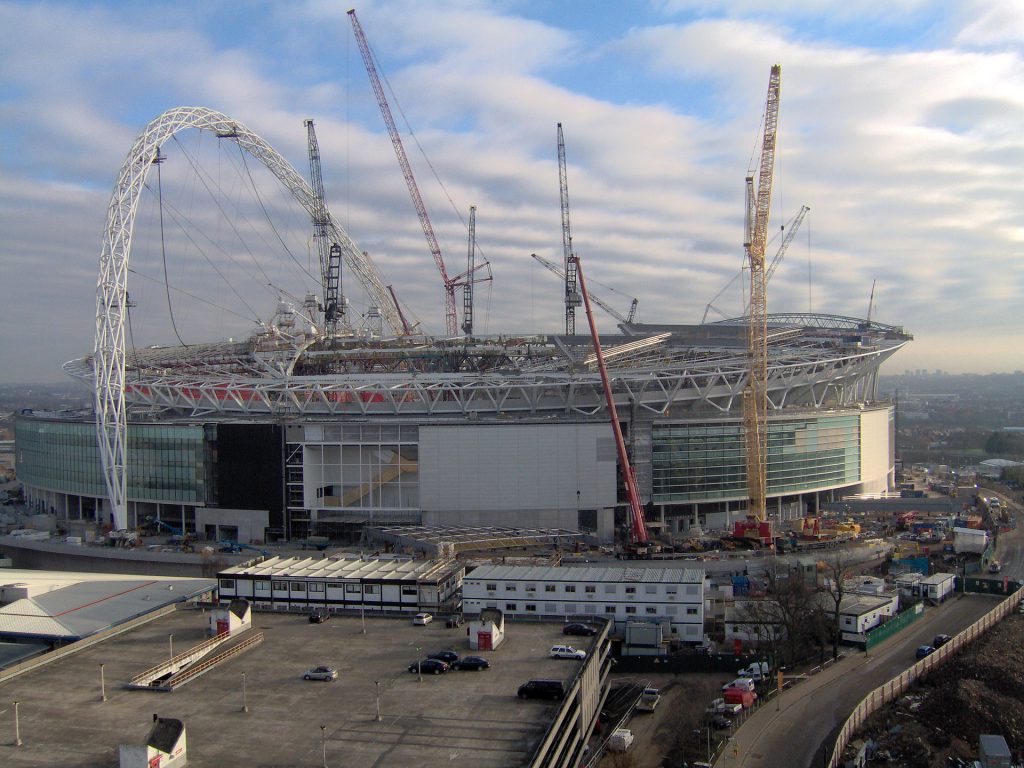
As Design Build Network wrote, “The aim of the project was to design and build a state-of-the-art national stadium, unlike any other in the world, which would be the home of English football and to host large events such as Cup Finals, music events and athletics.”.
The promis is well held. It still hosts the most important sport games, and the best British concerts are played there!
2. The Stadio Olimpico (Italy)
The Stadio Olimpico has met several renovations. Located in Rome (Italy), it was built in 1927 and partially opened in 1932. Do you know the first name of the stadium? In 1937 it was called the Stadio dei Cipressi. The construction work began in 1927, under the direction of Turinese engineer Angelo Frisa and Architect Enrico Del Debbio.
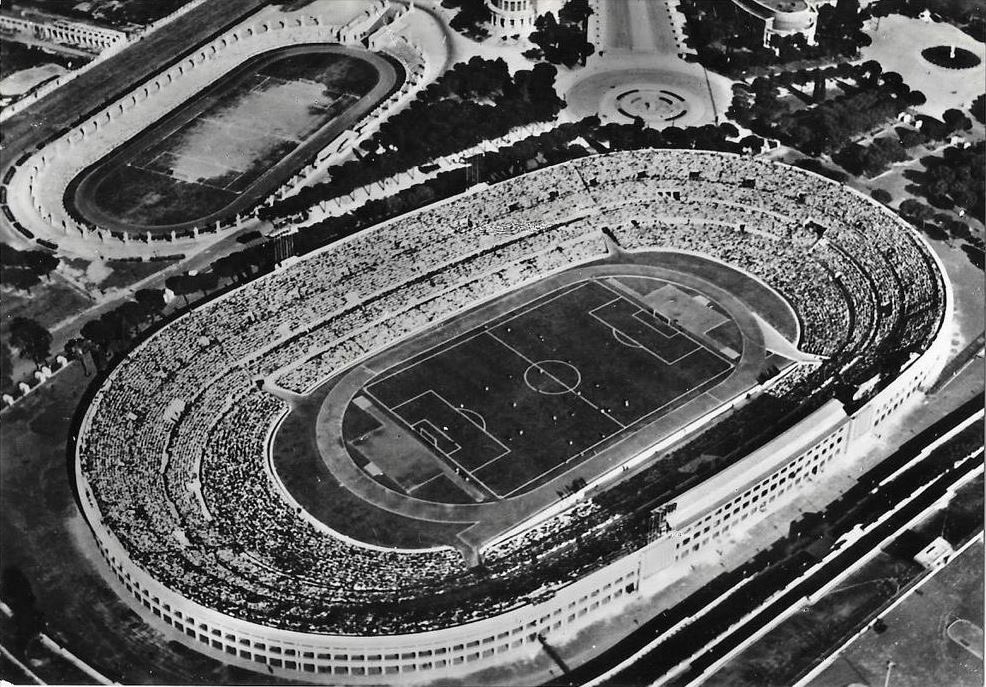
In 1953, the working site was reopened for the completion of the stadium under the direction of the engineer Carlo Roccatelli. It is in 1951, after his death, that the direction of work has been entrusted to the architect Annibale Vitellozzi. At this time, the stadium was known as Stadio dei Centomila.
The stadium was finally renamed for the 1960 Olympics as we know it: the Stadio Olimpico.
The stadium was the main stadium for the 1990 FIFA World Cup, for which there was necessary restructuring and roofing of it. The work was entrusted to a team of designers including the architect Annibale Vitellozzio who worked on the previous completion of the stadium.
3. Allianz Arena (Germany)
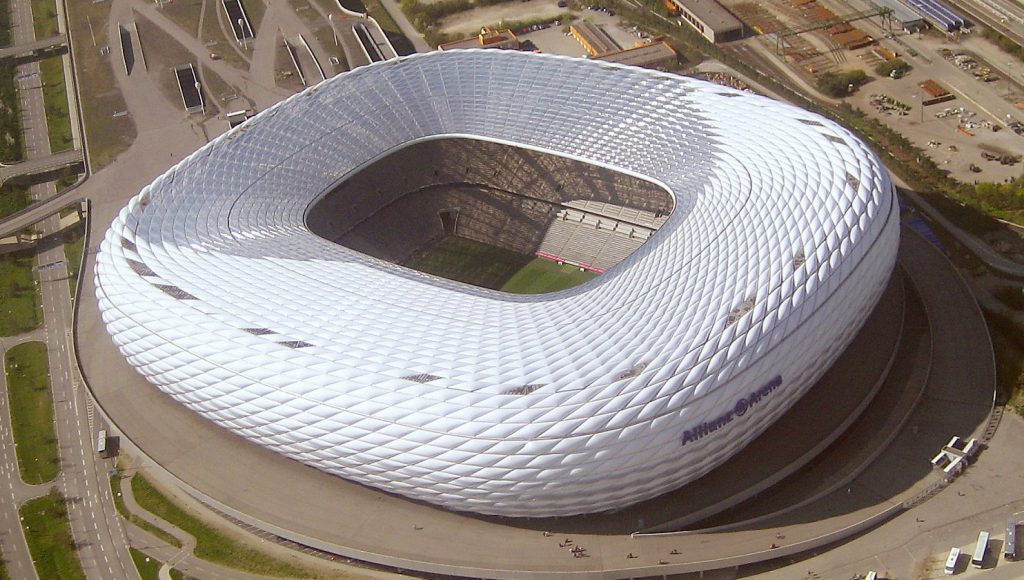
The Allianz Arena is located in Munich, Germany. The construction work of the stadium began in 2002 and was officially opened in 2005. It was designed by the Swiss architects Herzog & de Meuron; they developed the concept of the stadium with a see-through exterior made of self-cleaning ETFE-foil panels that can be lit from the inside.
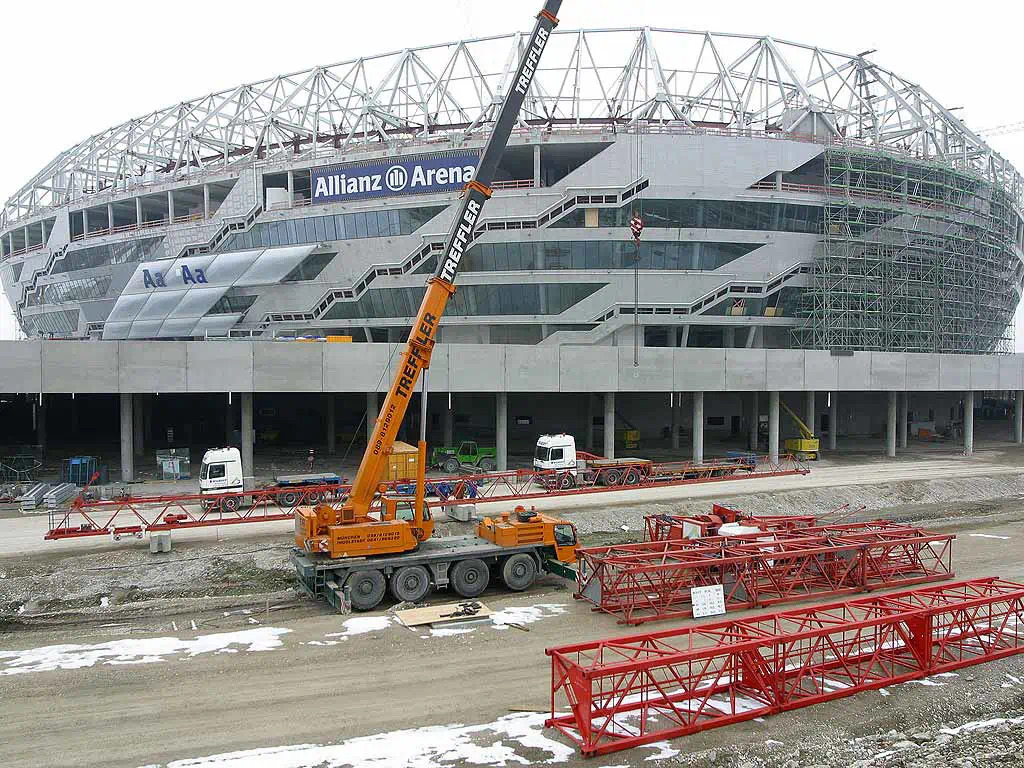
Words of the architects about the construction:
“Three themes define our architectural and urban concept for the world championship football stadium in Munich (the Allianz Arena): the presence of the stadium as an illuminated body that can change its appearance and is situated in an open landscape, the procession-like arrival of fans in a landscaped area and the crater-like interior of the stadium itself”
Full article: https://www.herzogdemeuron.com/index/projects/complete-works/201-225/205-allianz-arena.html
4. Johan Cruyff Arena (Netherlands)
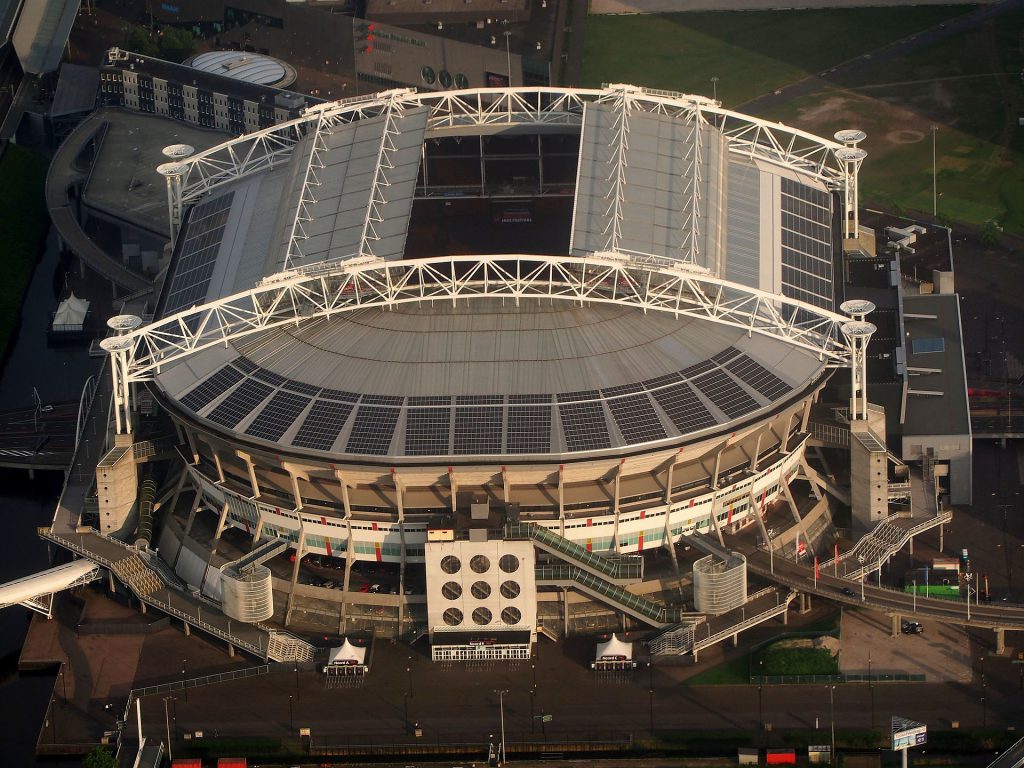
The Johan Cruijff Arena (in dutch) is the main stadium of the Dutch capital city of Amsterdam in the Netherlands. Do you know where the stadium got its name from? It was previously named Amsterdam Arena until the 2018-19 football season when it was renamed after the death and in honour of legendary Dutch footballer Johan Cruyff who died in March 2016. The stadium’s original architect is Rob Schuurman, the construction work started in 1993 and was completed in 1996.
The 1993 construction work was undertaken by Ballast Nedam and the Royal BAM Group and took almost 3 years to complete. In 2015, there was a renovation on the stadium’s facade planned to be completed in 2020 for the 4 matches of the Euro 2020. Construction works started in 2017 and were completed in 2018.
5. Baku Olympic Stadium (Azerbaijan)
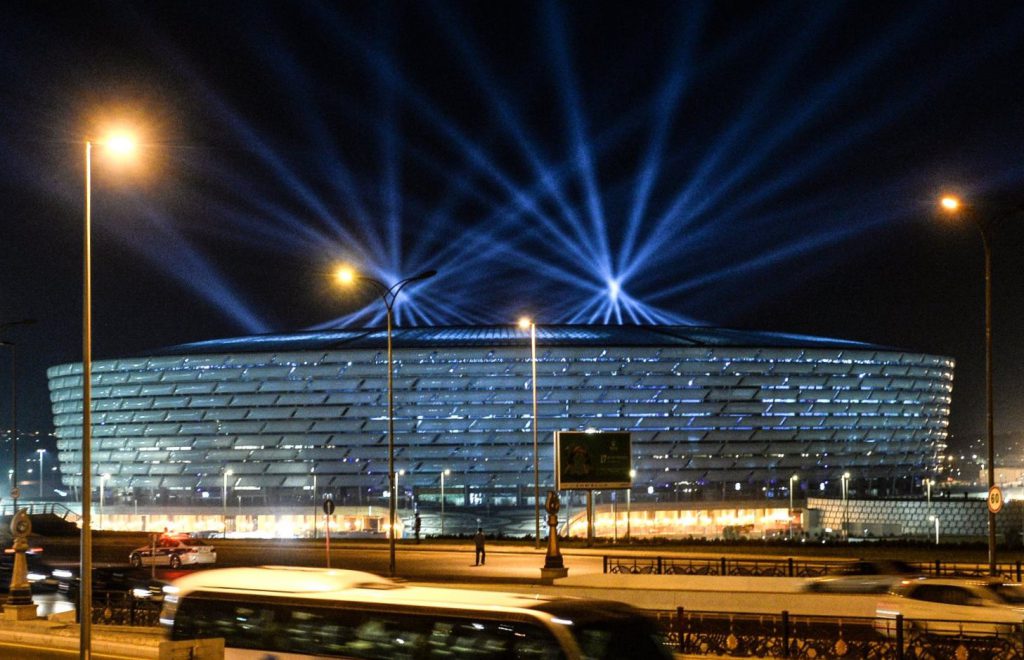
The Bako Olimpya Stadionu of its real name is the largest stadium in Azerbaijan. The construction work started in 2012 with the excavation and backfilling of the stadium area. The works were completed, and the stadium opened in 2015. The architects on the projects were TOCA for the Concept design, Heerim and ROSSETTI (Sports Architect), Structural engineer was Thornton Tomasetti.
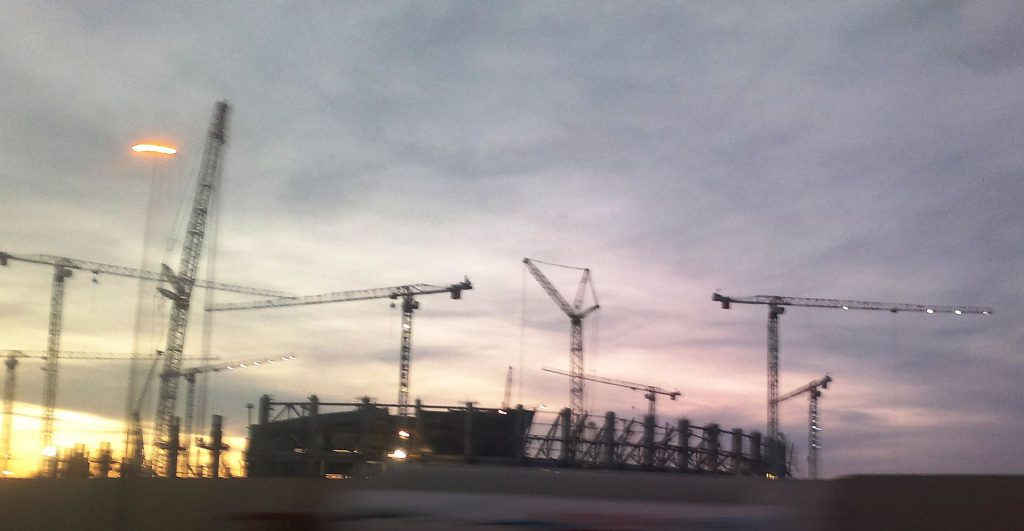
The stadium hosted athletics and ceremonies of 2015 European Games and the 2019 UEFA Europa League Finale. For Euro 2020, the stadium hosted three matches of Group A and the Czech Republic – Demark Quarter-finals.
6. Krestovsky Stadium (Russia)
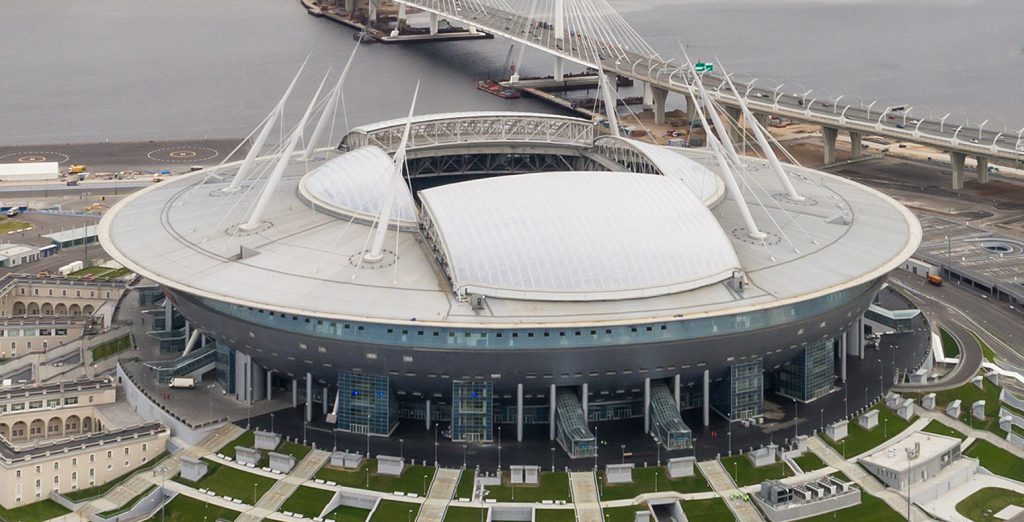
The Krestovsky Stadium is known as Gazprom Arena (for sponsorship reasons) and is located in Saint Petersburg in Russia. It was built as one of the venues for the 2018 FIFA World Cup. The architect on the project was Kisho Kurokawa, the design was a modified and enlarged version of the Toyota Stadium in Toyota City, Japan, which was also designed by Kurokawa.
The planning of the stadium began in 2005 and construction started in 2008. The stadium was completed and opened in 2017.
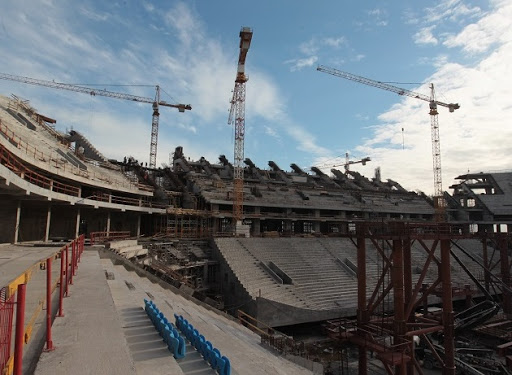
About the construction:
“In order to meet the project requirements, various up-to-date technologies are applied, such as the movable field system to keep the turf fresh throughout a year, the retractable roof with hot air-inflated membrane structure to melt the snow in winter and etc.
The stadium is also designed as a sustainable and environment-friendly eco-architecture where most advanced environmental technologies are introduced such as the rainwater and drainage water recycling system, the use of solar energy and etc.”
Full article: https://www.kisho.co.jp/page/480.html
7. Puskás Aréna (Hungary)
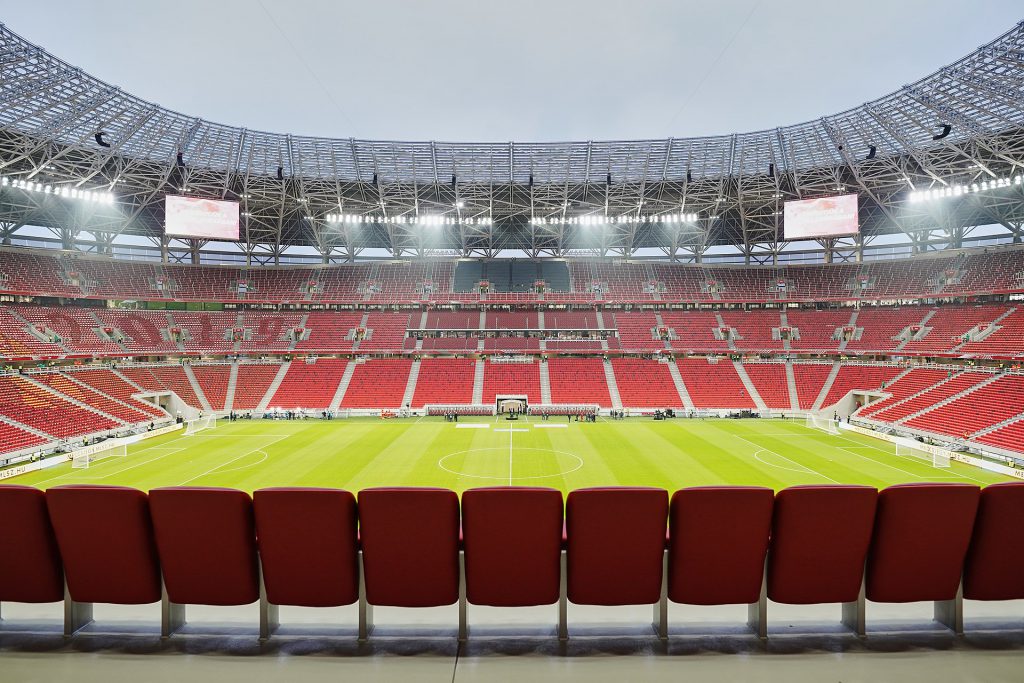
The Puskás Aréna is located in the 14th district (Zugló) of Budapest, Hungary. The project idea appeared in 2011. It was in 2014 that the Hungarian architect György Skardelli showed his original plans (He was the designer of the László Papp Budapest Sports Arena). The same year, the original design of the stadium was voted for best design by Stadiumcb.com. The construction work started in 2017, built in the lace of the former Ferenc Puskas Stadium whose demolition was completed in 2016. The stadium was ready and opened in 2019 for the football match between the national teams of Hungary and Uruguay.
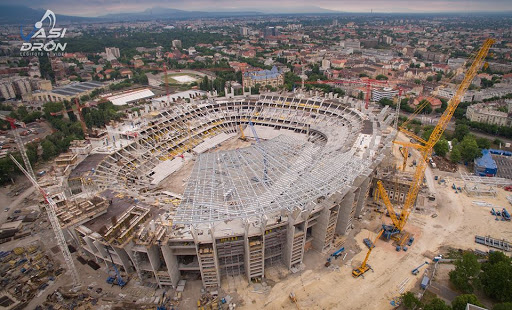
As mentioned above, the construction work took place on what was the initial stadium. The idea of the design was to preserve what characterizes the former building but also adapting it and implementing modern techniques. Basically, the goal was to avoid an erasure of the old stadium.
8. Arena Națională (Romania)
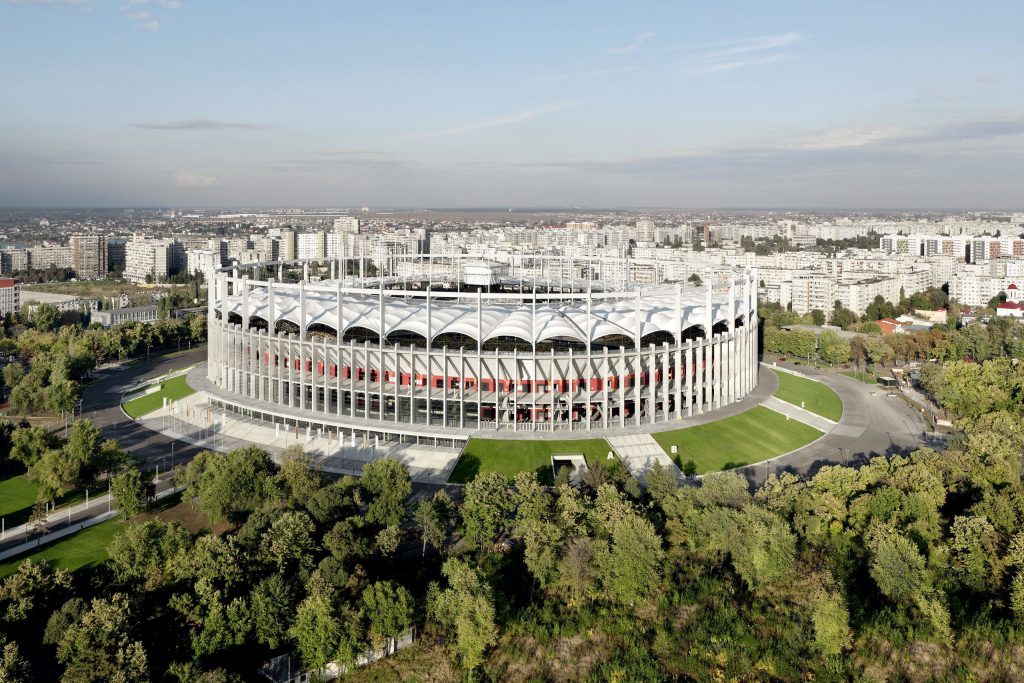
The Arena Națională is located in Bucharest, Romania. The stadium was built on the site of the original National Stadium, which was demolished from 2007 to 2008. The construction of the new stadium began in 2008 and it opened in 2011. The winners of the tender that had the chance to design and build it were the German Max Boegl and Italian Astaldi. The architects who worked with them on the project were Gerkan, Marg and Partners.

The stadium is one of the few in the 2020 European competition, along with Wembley, to have a retractable roof.
About the construction:
“The new roofed soccer arena takes up the existing structure of the earthen ramp and, together with the reinforced concrete structure of the upper tier and the steel roof structure, creates the structural center of the historic sports park.”
Full article: https://www.gmp.de/en/projects/533/national-arena-bucharest
9. Estadio La Cartuja (Spain)
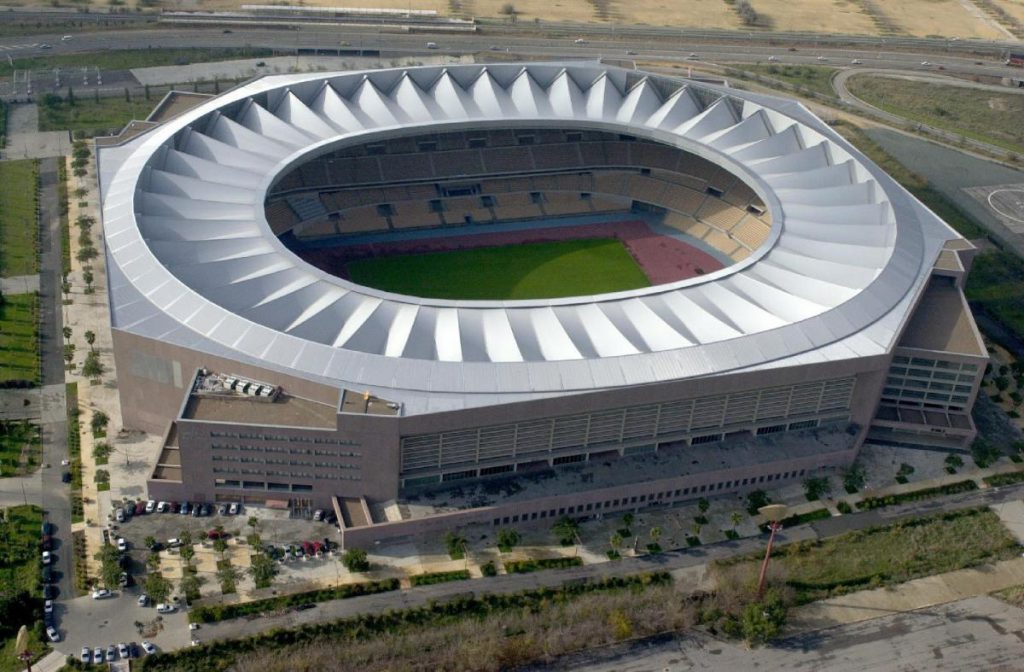
The stadium is officially known as Estadio La Cartuja de Sevilla and is in Seville, Spain. The construction work started in 1997 and was completed in 1999 for the World Championships in Athletics. The stadium was first planned and built for the 2004 Olympics. The architects of this project are Antonio Cruz Villalonand Antonio Ortiz Garcia from Cruz y Ortiz Arquitectos.
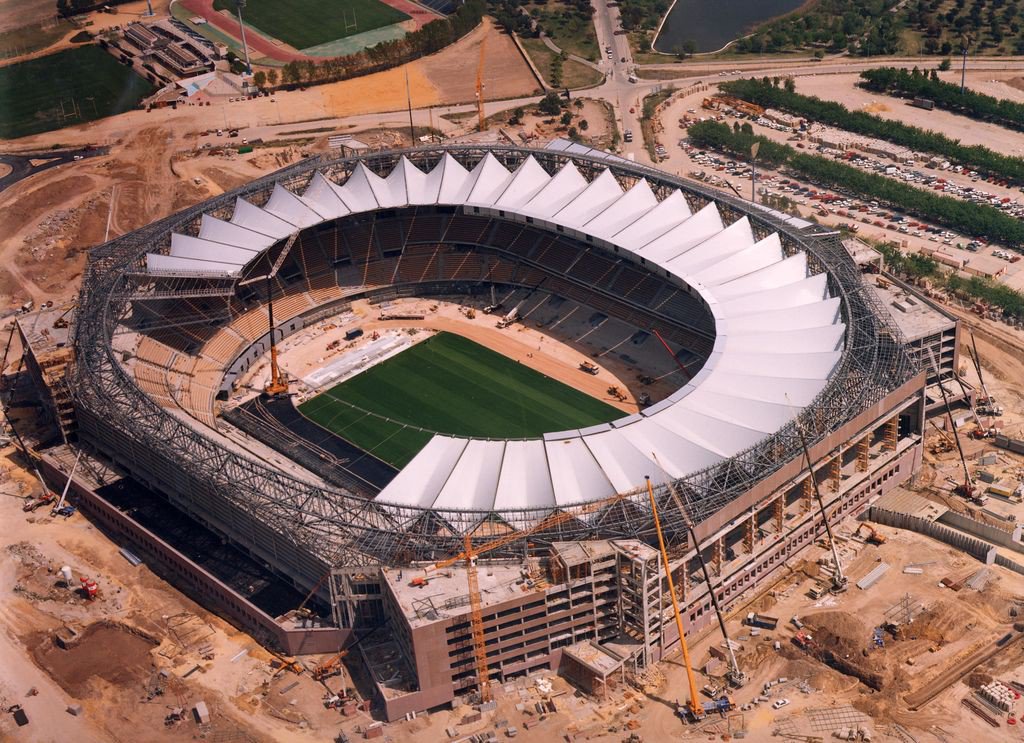
About the construction:
“Sinking the level of the sports track in relation to the natural level of the land, the access to the stadium is situated at an intermediate level, resulting in a minor difference between levels for spectators and reducing problems of evacuation. Thus, a building both silhouette-style and horizontal was designed, which incorporating several other purposes such as a hotel and offices, adopts an external perimeter marked by a series of angles and protrusions. This strongly contrasts to the obligatory continuous and oval lines of the seating area and roof.
On the one hand, the building has been generated by the contrast -the marked difference between the exterior and the interior- and on the other by the efforts to unify several functions of varying sizes and natures in one single building.”
Article available on the architects’ website: https://www.cruzyortiz.com/portfolio/la-cartuja-athletics-stadium/?content=descripcion
10. Hampden Park (Scotland)
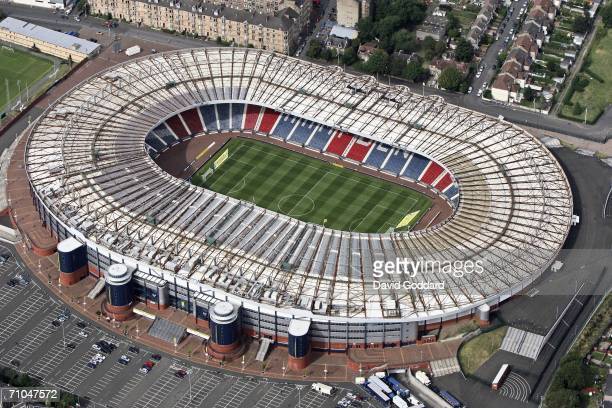
The Hampden Park is often referred to as Hampden only and is located in the Mount Florida area of Glasgow, Scotland. What do you know exactly about this stadium? From all the stadiums we saw above, it is by far the oldest! It opened in 1903.
Hampden Park is part of the history of the Queen’s Park football club, the first Scottish club founded in 1867. But the Football team’s story is not what you want to hear about here. The story begins when the club had tomove out to another field: the Hampden Park, in 1883. It was in the late 80s that architect James Millerdesigned twin grandstands along the south side of the ground with a pavilion wedged in between. The natural slopes were designed by Archibald Leitch and were shaped to form banks of terracing. This construction took over three years to complete. In 1920, this is how the stadium looked like:
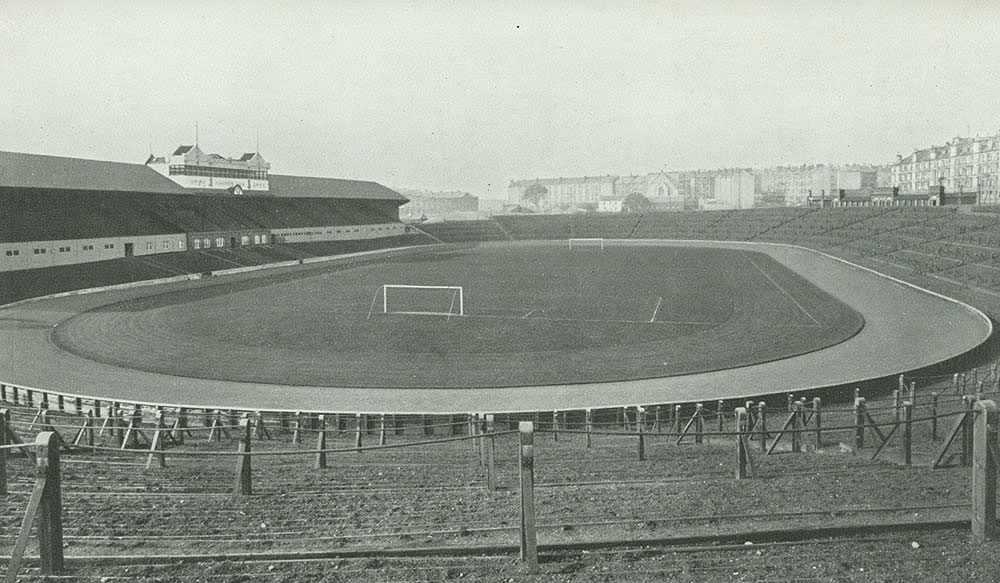
But the story does not stop here (which makes of Hampden Park the longest part of this article). But let’s move forward! We are in the late 1970s, Hampden Park needs a renewal. From here on the stadium will meet different phases, the final one being in 1997 and was open again for the 1999 Scottish Cup Final:
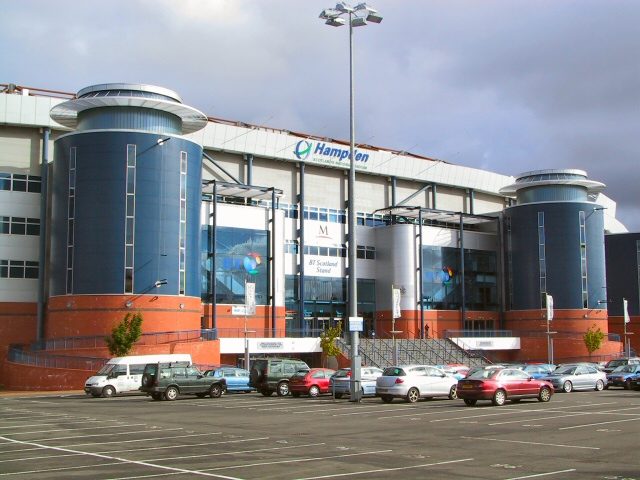
11. Parken Stadium (Denmark)
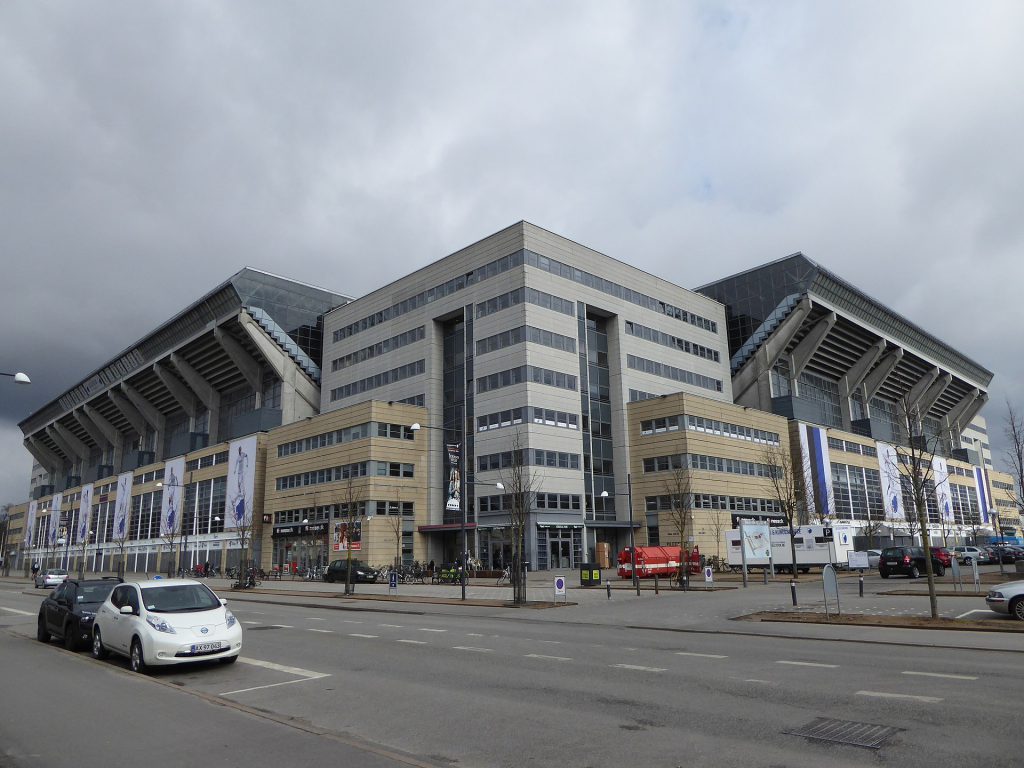
The Parken Stadium is simply known as Parken and as Telia Parken and in Denmark. The stadium was built from 1990 to 1992. Like Wembley and Arena Națională, it features a retractable roof. Parken was built on the site of former Denmark national stadium Idrætsparken. The architect in charge of the project was Gert Andersson. For the architecture, Andersson was inspired from large Italian sport arenas where the public can keep the feeling of proximity of the activities.
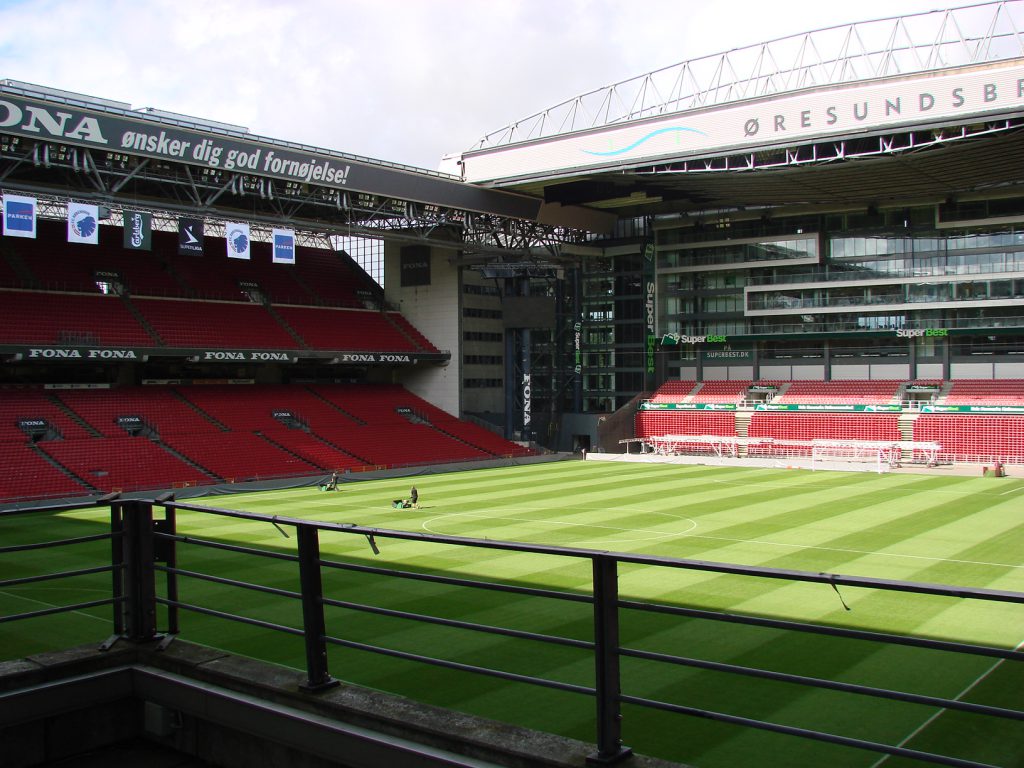
About the construction from Levi Jensen (worked closely with the architect):
“Parken Stadium is built around four corner buildings housing office facilities and with four linking spectator tribunes. The roofs of the tribunes are all constructed with visible space frame structures.
Later a flexible roof construction also made with space frames was equipped making it possible to cover the entire stadium with a large expandable roof.”
Article available HERE
Here are the stories of the 11 Stadiums that host the 2020 European Cup. Each of them has their specific own story which makes them unique.
Which one of them is your favorite? In which one did you go already?
About GAMMA AR
GAMMA AR is a Construction App that brings BIM models to the construction site using Augmented Reality. Check out the features of the software and start your 30-day free trial now.
If you have any questions or need support, send us an email at info@gamma-ar.com

